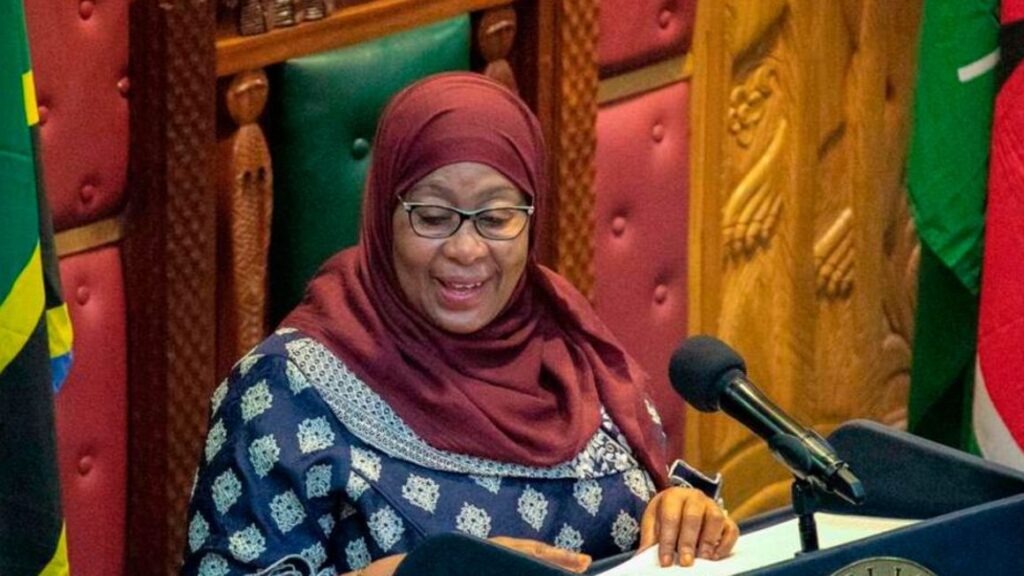Fossil finds from Tanzania in the mid-20th century kicked off East African hominid hunting.
Lucy and Ardi are the poster children of human evolution. But these famous fossil skeletons may never have been found if it weren’t for Louis and Mary Leakey’s pioneering efforts. The pair made several discoveries at Tanzania’s Olduvai Gorge in the 1950s and 1960s that inspired other anthropologists to come to East Africa in search of human ancestors. Here’s a look at some of the most important hominid fossil finds from Tanzania.
The Nutcracker Man (OH 5): The Leakeys’ first major discovery at Olduvai Gorge occurred in 1959. Mary found the roughly 1.8-million-year-old skull of a hominid with a flat face, gigantic teeth, a large crest on the top of its head (where chewing muscles attached) and a relatively small brain. They named the species Zinjanthropus boisei (now known as Paranthropus boisei). Nicknamed the Nutcracker Man, the species was too different from modern people to be the direct human ancestor that Louis had been hoping to find. But the discovery captured public interest in human evolution, and the Leakeys went on to unearth many more hominid fossils at Olduvai. OH 5 is the fossil’s official catalog name, meaning Olduvai Hominid Number 5.
Johnny’s Child (OH 7): The next big Leaky discovery came in 1960. Mary and Louis’ son, Johnny, found a lower jaw about 300 yards away from where the Nutcracker Man was discovered. The bone came from a young hominid; thus, the fossil was nicknamed Johnny’s Child. At the same spot, the Leakeys also dug up some hand bones and skull fragments. Using these skull fragments, the Leakeys and their colleagues estimated the roughly 1.8-million-year-old hominid’s brain size: 680 cubic centimeters. That was significantly bigger than the size of the average australopithecine brain, about 500 cubic centimeters. The hand bones revealed that the hominid had a “precision grip,” when a fingertip presses against the tip of the thumb. This movement allows for fine manipulation of objects, such as turning a key in a door or threading a needle. The precision grip led the Leakeys to conclude that this hominid was the one who made the stone tools found at Olduvai. Because of the tool-making and the big brain, the Leakeys decided OH 7 represented the earliest member of the genus Homo: Homo habilis (meaning Handy Man).
OH 8: Also in 1960, the Leakeys’ team discovered a well-preserved fossil foot belonging to H. habilis. The bones indicate the hominid had modern-looking foot arches, suggesting the species walked like modern people do. Tooth marks on the specimen’s ankle reveal the hominid had been a crocodile’s lunch.
OH 9: At the same time the Leakeys unearthed the first examples of H. habilis, they also recovered the skull cap of a more recent hominid dating to about 1.4 million years ago. At 1,000 cubic centimeters, the specimen’s brain was much bigger than that of H. habilis. The skull had thick brow ridges and a low, sloped forehead—key features linking the fossil to the species Homo erectus.
Twiggy (OH 24): Discovered in 1968 by Peter Nzube, Twiggy is a skull belonging to an adult H. habilis dating to roughly 1.8 million years ago. Although OH 24 is the most complete H. habilis skull from Olduvai Gorge, it was found crushed completely flat (and therefore named after the slender British model of the same name). Paleoanthropologist Ron Clarke reconstructed what the skull would have looked like, but it’s still fairly distorted.
LH 4: In the 1970s, after Louis died, Mary began excavations at Laetoli, about 30 miles from Olduvai Gorge. The fossils she was finding there were much older than the bones she and Louis had discovered at Olduvai. In 1974, for example, her team unearthed a lower jaw with teeth dating to 3.6 million years ago. It was cataloged as Laetoli Homind 4, or LH 4. Around the same time, anthropologists at the site of Hadar in Ethiopia were also finding hominid fossils dating to more than 3 million years ago, including the famous Lucy skeleton. At first, no one was sure what to call these older fossils. After analyzing both the Hadar and Laetoli specimens, anthropologists Tim White and Donald Johanson (Lucy’s discoverer) concluded that all of the fossils represented one species that they called Australopithecus afarensis. They chose LH 4 as the species’ type specimen, or the standard representative of the species. Mary did not approve. She didn’t believe the fossils from Laetoli were australopithecines. But under the rules of taxonomy, once a type specimen is designated, it’s forever associated with its species name. (For more on the controversy, see Johanson’s book Lucy.)
Laetoli Footprints: In 1978, one of Mary’s team members, Paul Abell, made the most famous discovery at Laetoli: He found the trail of about 70 fossilized hominid footprints. Based on the footprints’ age, 3.6 million years, anthropologists think they were made by an A. afarensis group. The footprints reveal this early hominid had a very modern way of walking. The big toe was in line with the other toes, not off to the side like an ape’s big toe. And the prints reveal the walkers had arches, unlike the flat feet of an ape. The footprints also suggest A. afarensis had a modern gait.
source/content: smithsonianmag.com (headline edited)
__________

An artist’s reconstruction of Paranthropus boisei, a hominid species that was first discovered in Tanzania. Image: dctim1/Flickr
_____________
TANZANIA

